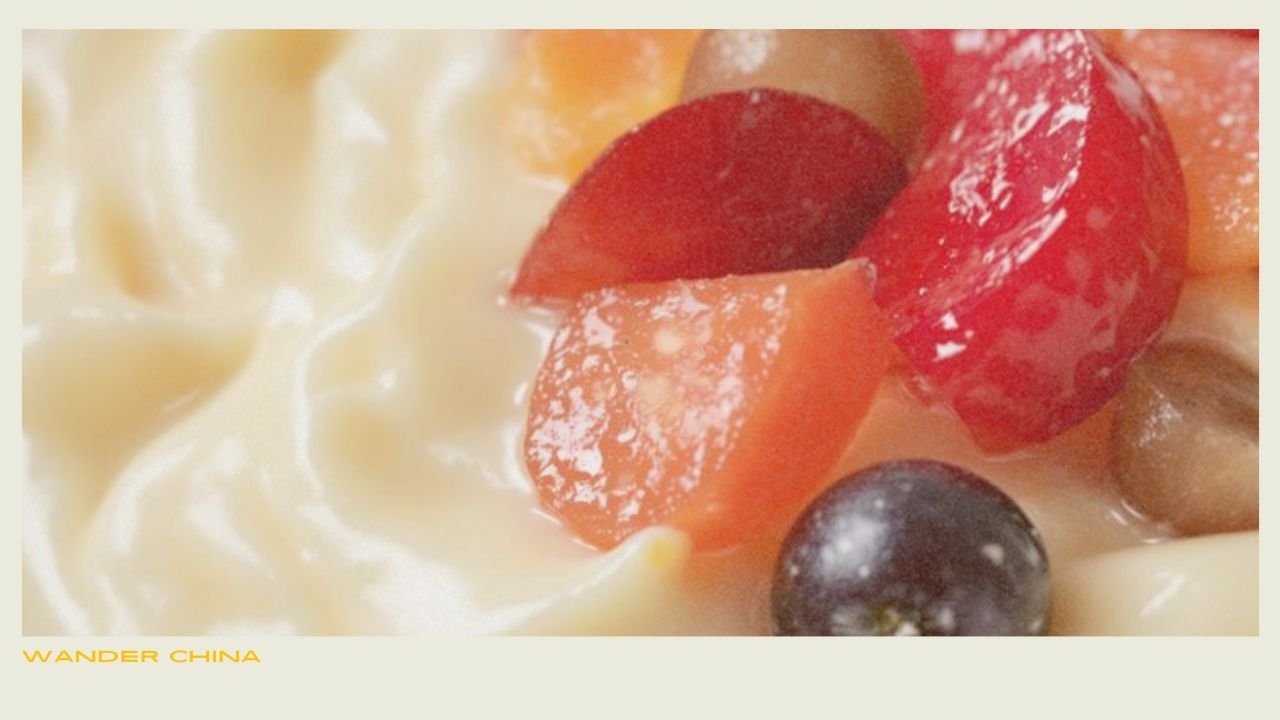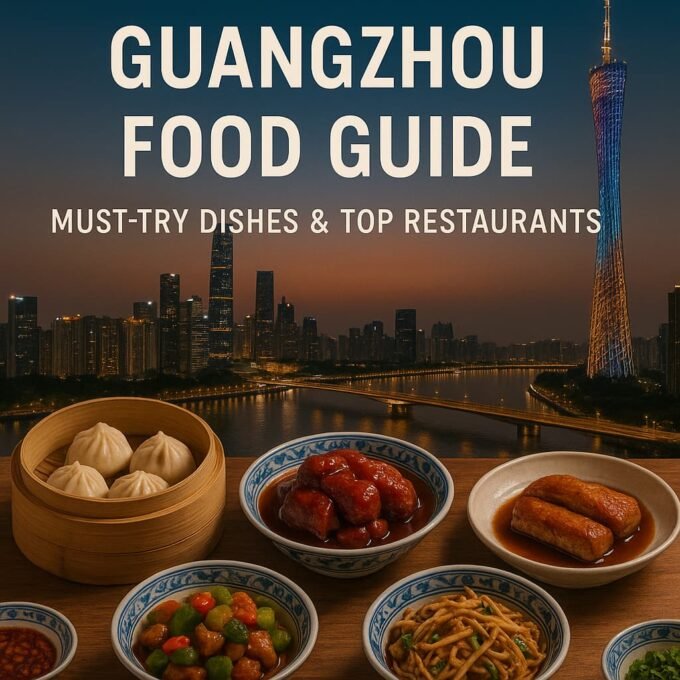Deliciously Creamy Chinese Pudding: A Sweet Treat for Every Occasion
Discover the creamy delight of Chinese pudding, a versatile dessert perfect for any occasion.

Chinese pudding is a dessert that’s been around for ages, and it’s still a favorite for many. It’s creamy, sweet, and just hits the spot after a meal. Whether you’re at a fancy restaurant or a cozy café, Chinese pudding can be found on menus everywhere. It’s one of those desserts that’s simple yet so satisfying.
Plus, there are so many varieties to explore, each with its own unique twist. From traditional recipes to modern takes, Chinese pudding is a treat that fits every occasion.
Key Takeaways
- Chinese pudding is a versatile dessert, enjoyed in various forms across different regions.
- The dessert has a rich history, with roots in traditional Chinese culinary practices.
- Popular varieties include soy milk pudding, almond jelly, and mango pomelo sago.
- Key ingredients often include soy, almonds, and fruits, which contribute to its unique taste.
- Chinese pudding has gained global popularity, blending traditional and modern flavors.
Exploring the Rich History of Chinese Pudding
Origins of Chinese Pudding
Chinese pudding’s roots stretch back centuries, intertwining with the culinary traditions of ancient China. This dessert, which weaves together elements of texture and flavor, likely began as a simple rice-based treat.
Over time, it evolved with the introduction of new ingredients like soy milk and almond, adapting to regional tastes and available resources. Chinese pudding is more than just a sweet treat; it’s a testament to the rich tapestry of Chinese culinary history.
Cultural Significance in Chinese Cuisine
Chinese desserts, including pudding, carry deep cultural meanings. They’re not just about satisfying a sweet tooth; they symbolize prosperity, happiness, and family unity. For example, the Ginger Milk Pudding, a traditional hot dessert from Shawan Ancient Town, highlights the harmonious blend of ginger and milk, offering a comforting experience. These desserts often appear during festivals and celebrations, reinforcing their role in cultural rituals and family gatherings.
Evolution Over the Centuries
As time passed, Chinese pudding underwent significant transformations. Initially simple, it absorbed influences from trade and cultural exchanges, incorporating ingredients like coconut milk and exotic fruits.
Today, modern variations include vegan options and fusion flavors, reflecting global culinary trends. This evolution showcases the adaptability of Chinese cuisine, maintaining its roots while embracing innovation.
Chinese pudding’s journey through time mirrors the broader narrative of Chinese cuisine: a blend of tradition and innovation, where each bite is a link to the past and a nod to the future.
Popular Varieties of Chinese Pudding
Soy Milk Pudding: A Vegan Delight
Soy Milk Pudding is a timeless Chinese dessert that’s been winning hearts for ages. It’s got this silky texture that’s just irresistible. Made from soybeans, water, and sometimes coconut milk, it’s a pudding that can be enjoyed both warm and cold.
You can add a touch of vanilla or even some black sesame seeds for a little extra zing. It’s a great vegan option and super easy on the calories, so you can indulge without any guilt. Perfect for anyone craving something sweet and light.
Almond Jelly: A Classic Favorite
Almond Jelly is another classic that has stood the test of time. This dessert is all about that smooth jelly-like texture, made by blending sweet apricot kernels with sugar and almond extract.
It’s been a staple in Chinese cuisine for centuries, often served chilled. A refreshing treat, it’s perfect for hot summer days or whenever you want something light and sweet. A true testament to how simple ingredients can create something so delightful.
Mango Pomelo Sago: A Fruity Twist
If you’re in the mood for something fruity and refreshing, Mango Pomelo Sago is the way to go. This dessert combines the sweetness of mangoes with the tartness of pomelo and the chewy texture of sago pearls. It’s a burst of flavors and textures in every bite, making it a favorite at Chinese dessert cafes. Whether you’re enjoying it as a dessert after a meal or just as a treat on its own, it’s sure to brighten up your day.
Ingredients That Make Chinese Pudding Unique
Traditional Ingredients Used
Chinese pudding is a delightful blend of flavors and textures, thanks to its unique ingredients. Soybeans are a staple, especially in creamy coconut china grass pudding, which uses coconut milk for a rich taste. Almonds, often in the form of almond extract, give almond jelly its classic flavor.
Glutinous rice, known for its sticky texture, is another common base, often sweetened with sugar or honey. Agar agar or gelatin is used to set the pudding, giving it that signature wobble.
Modern Twists and Additions
While traditional ingredients hold their charm, modern variations introduce exciting twists. You might find matcha or black sesame seeds adding a nutty flavor to the mix.
Fresh fruits like mango or berries are popular additions, offering a burst of freshness. Some recipes even incorporate chocolate or coffee, appealing to a broader audience. These innovations keep the tradition alive while inviting new palates.
Health Benefits of Key Ingredients
Chinese pudding isn’t just about taste; it’s also about health. Soy milk and almonds are rich in protein and healthy fats. Glutinous rice is a good source of energy, and when paired with fruits, it offers a dose of vitamins and minerals. Coconut milk, while creamy, is known for its medium-chain triglycerides that may aid in weight management. These ingredients make Chinese pudding a treat you can enjoy without too much guilt.
Chinese pudding ingredients offer a delightful mix of tradition and innovation, making it a beloved dessert across generations. Whether you stick to the classics or venture into modern twists, there’s a pudding for every taste.
How to Make Chinese Pudding at Home

Making Chinese pudding at home is a delightful adventure. Whether you’re trying to recreate a dish from your favorite restaurant or exploring something new, the process is rewarding and fun. Here’s a guide to help you get started.
Essential Tools and Equipment
Before you begin, gather the necessary tools and equipment. Having everything ready makes the process smoother and more enjoyable.
- Mixing Bowls: Various sizes for different ingredients.
- Steamer: Essential for achieving the perfect texture in many traditional puddings.
- Measuring Cups and Spoons: Precision is key in dessert making.
Step-by-Step Recipe Guide
Here’s a simple guide to making a popular variety of Chinese pudding. Let’s take the example of Chinese tofu pudding, a favorite among many.
- Prepare Ingredients: Gather tofu, ginger, sugar, and water.
- Mix and Heat: Combine sugar and water in a saucepan. Add ginger slices and bring to a simmer.
- Steam Tofu: Place tofu in a steamer and steam until soft.
- Combine and Serve: Pour the ginger syrup over the steamed tofu. Serve warm or chilled.
Tips for Perfecting Your Pudding
Creating the perfect pudding takes practice and patience. Here are some tips to help you along the way:
- Consistency is Key: Ensure your mixture is smooth before steaming.
- Experiment with Flavors: Add a twist with different syrups or toppings.
- Temperature Matters: Some puddings are best served warm, others chilled. Try both to see what you prefer.
Making Chinese pudding at home is not just about following a recipe; it’s an experience that brings joy and satisfaction. With each attempt, you’ll discover new flavors and techniques that make the process even more enjoyable.
Pairing Chinese Pudding with Other Desserts
Complementary Flavors and Textures
Chinese puddings, with their silky and smooth texture, blend beautifully with a variety of other desserts. The key is to balance textures and flavors. For example, pairing a creamy soy milk pudding with crispy sesame peanut candy can create a delightful contrast.
Similarly, the lightness of almond jelly can be complemented by the richness of black sesame paste balls. This contrast of textures not only enhances the eating experience but also brings out the subtle flavors in each dessert.
Serving Suggestions for Special Occasions
When it comes to special occasions, presentation is just as important as taste. Consider serving mango pomelo sago pudding in elegant glass cups, topped with a sprinkle of fresh pomelo and a mint leaf for a pop of color.
Arranging a platter with small portions of different puddings alongside slices of fresh fruit can make for an eye-catching and delicious centerpiece. Don’t forget to add a touch of elegance with edible flowers or gold leaf.
Creating a Dessert Platter with Chinese Pudding
Creating a dessert platter is a fantastic way to showcase the variety of Chinese puddings. Here’s how you can do it:
- Select a variety of puddings – Choose from soy milk pudding, almond jelly, and mango pomelo sago for a diverse selection.
- Add complementary desserts – Include items like tanghulu (candied fruit) or Chinese almond cookies for additional flavors.
- Arrange creatively – Use a large platter and arrange the puddings and desserts in an aesthetically pleasing manner, using small bowls or ramekins for the puddings.
- Garnish and serve – Garnish with fresh fruits, nuts, or a drizzle of syrup to enhance both the look and taste.
A well-curated dessert platter not only satisfies the sweet tooth but also becomes a conversation starter, making your gathering memorable.
Where to Find the Best Chinese Pudding

Top Chinese Dessert Cafes
When you’re on the hunt for the finest Chinese pudding, dessert cafes in China are a great place to start. These cafes often serve a variety of traditional and modern puddings, each with its own unique twist.
The bustling streets of Hong Kong and Beijing are home to some of the most renowned dessert spots, where you can savor everything from silky tofu pudding to rich mango sago. Don’t miss out on trying the local favorites, as each cafe prides itself on its own secret recipe.
Famous Pudding Shops Around the World
Chinese pudding has made its mark globally, with shops dedicated to these sweet treats popping up in major cities worldwide. In places like New York, London, and Sydney, you’ll find pudding shops that offer both classic flavors and innovative creations.
These shops often feature a menu that includes almond jelly, soy milk pudding, and more, allowing you to experience a taste of China no matter where you are.
Online Stores for Authentic Ingredients
For those who prefer making Chinese pudding at home, online stores offer a convenient way to source authentic ingredients.
From glutinous rice flour to fragrant almond extract, these platforms provide everything you need to whip up a delicious dessert in your own kitchen. Look for specialty Asian grocery sites that deliver worldwide, ensuring you have access to genuine products that bring out the best in your homemade puddings.
Exploring the world of Chinese pudding is not just about tasting a dessert; it’s about experiencing a piece of cultural heritage that has been shared and cherished across generations.
The Future of Chinese Pudding in Global Cuisine
Trends in Modern Dessert Making
Chinese pudding is making waves in the culinary world, and it’s not just about tradition anymore. In 2025, US menus are expected to be influenced by ingredients and dishes from various countries, including China. Chefs are experimenting with Chinese pudding, blending it with trendy flavors like matcha and yuzu. It’s all about creating something new while respecting the old.
Imagine a pudding that combines the creamy texture of traditional Chinese desserts with a hint of exotic spices from other cultures. This fusion is what makes the dessert scene exciting today.
Fusion Flavors and Innovations
The world is getting smaller, and so is the gap between different cuisines. Chinese pudding is now part of this global culinary conversation. Innovative chefs are crafting puddings with unexpected twists, like integrating tropical fruits or savory elements.
These new versions are not just about taste; they’re about experience. Picture a pudding with a layer of mango puree on top, or a sprinkle of sea salt to balance the sweetness. It’s about pushing boundaries and seeing what works.
Chinese Pudding in Popular Culture
Chinese pudding has found its way into pop culture, too. From being featured in cooking shows to being a staple in dessert cafes worldwide, it’s gaining a fan base.
People love the story behind it and the unique taste it offers. The pudding isn’t just a dessert; it’s a piece of cultural heritage that people are eager to share and enjoy. Whether it’s a traditional almond jelly or a modern twist with soy milk, Chinese pudding is here to stay and evolve.
Conclusion
In the end, Chinese pudding is more than just a dessert; it’s a celebration of flavors and textures that can fit any occasion. Whether you’re indulging in a creamy soy milk pudding or savoring the rich taste of almond jelly, these treats bring a touch of sweetness to your day.
They’re easy to make and even easier to enjoy, offering a little slice of Chinese culinary tradition right in your home. So next time you’re in the mood for something sweet, why not try whipping up one of these delightful puddings? You might just find a new favorite dessert.
FAQ
What is Chinese pudding made of?
Chinese pudding can be made from a variety of ingredients, including soy milk, almond milk, mango, and sago. Traditional recipes often use simple ingredients like sugar, milk, and gelatin.
Is Chinese pudding vegan?
Some Chinese puddings, like soy milk pudding, can be vegan. However, others may contain dairy or gelatin, so it’s important to check the ingredients if you’re following a vegan diet.
How do you serve Chinese pudding?
Chinese pudding can be served either warm or cold, depending on the type and personal preference. It can be topped with fruits, nuts, or a sweet syrup for added flavor.
Where can I buy Chinese pudding?
You can find Chinese pudding at many Asian grocery stores, dessert cafes, or online. Some restaurants may also serve it as part of their dessert menu.
Can I make Chinese pudding at home?
Yes, you can make Chinese pudding at home! There are many recipes available that guide you through the process using simple ingredients and tools.
What are some popular types of Chinese pudding?
Popular types include soy milk pudding, almond jelly, and mango pomelo sago pudding. Each has a unique flavor and texture, making them favorites among dessert lovers.
Recent Posts
- Guangzhou Garment Wholesale Markets: My Local Guide
- Best Hotel in Guangzhou: A Comprehensive Guide for Foreign Travelers
- Guangzhou Food Guide: Must-Try Dishes & Top Restaurants (2025 Edition)
- Top Outlet Malls in Guangzhou: My Ultimate 2025 Shopping Guide
- Arts and Crafts Wholesale Markets in Guangzhou
Recent Comments
Best Hotel in Guangzhou: A Comprehensive Guide for Foreign Travelers
Find the best hotels in Guangzhou—from luxury icons to local favorites. Updated...
Guangzhou Food Guide: Must-Try Dishes & Top Restaurants (2025 Edition)
I’m an expat in Guangzhou sharing the best local dishes, top restaurants...
Top Outlet Malls in Guangzhou: My Ultimate 2025 Shopping Guide
I explored Guangzhou’s best outlet malls—real deals, top brands, and local tips...
Arts and Crafts Wholesale Markets in Guangzhou
Discover Guangzhou’s top arts & crafts wholesale markets, from Yide Road to...







Leave a comment